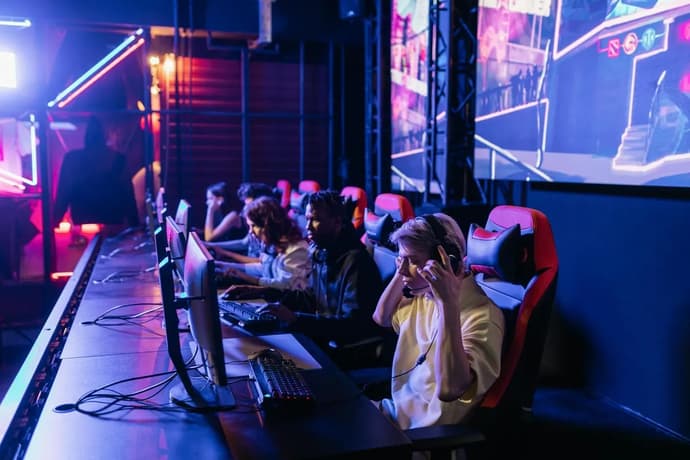
Sponsorships, Streams, and Salaries: The Economics of eSports

The eSports market attracts the attention of fans. Thus, in 2024, the industry was estimated at more than $2 billion. Forecasts show that by 2032, the industry will grow to $9 billion. Sponsorships and streams are heavily involved, prize funds in tournaments reach $40 million. The best players receive large salaries. The industry can already be equated in scale to traditional sports. The economy of eSports takes into account other factors.
Sponsorships: The Backbone of eSports Revenue
Sponsorship plays an important role in the development of eSports, and you can check out Casinosarabi.com for more information about the sponsors among new online casinos for Arab players. It provides the necessary funding for teams, tournaments and individual players. Large brands invest in eSports. Among them are Red Bull, Intel and Nike. Sponsorship forms the branding of the team. It influences the organization of events, increases the recognition of players.
In addition to traditional tools, brands and manufacturers offer support in holding events. Sponsorship deals include agreements with elite teams. All this helps players and organizations develop the brand, increasing the popularity of eSports among a wide range of fans.
Streaming Revenue: A Key Income Source
Streaming revenue also pays off. It is one of the key sources of income for popular teams and players. These include the following:
- Twitch or YouTube games. Teams earn money from streams by attracting a large number of viewers and earning money from views.
- Monetization options. Income from advertising, subscriptions, and donations helps to earn and receive the corresponding profit.
- Exclusive content offers. Streamers enter into contracts with brands, which helps to earn money from advertising and receive additional benefits.
- Affiliate marketing. Some streamers earn money by promoting various products, equipment, and technology.
The market is actively developing. This allows eSports players to expand their opportunities for earning money from professional activities.
Salaries and Tournament Earnings
Many popular eSports players receive a good salary. At the same time, the level of this income directly depends on activity and popularity. Check out the factors that affect earnings.
Category | Details | Examples |
Player Salaries | Contracts with organizations that provide stable income | Top players earn $300K+ per year |
Tournament Prize Pools | Earnings from global competitions | The International (Dota 2) - $40M+ |
Sponsorship Bonuses | Additional income from brand deals | Players like Ninja & Shroud sign multi-million dollar deals |
Streaming & Content Revenue | Income from partnerships with Twitch, YouTube and Kick | Top streamers earn millions annually |
Team Revenue Distribution | Organizations share profits with players | Team Liquid and FaZe Clan offer revenue sharing |
Merchandise & Advertising | Sale of jerseys, gaming peripherals and other branded goods | Exclusive partnerships with Logitech, Nike and Adidas |
All this affects the earnings of athletes and allows them to make a profit from their activities.
The Business of eSports Teams
ESports teams are a lucrative business. Teams use their popularity to get contracts and earn money. Successful teams establish partnerships with major brands. They also participate in various revenue sharing agreements. The profit from each content differs depending on the specific terms.
Player contracts are important. Salaries vary depending on the level and skill of the players. Managing operational costs to develop the skills of each team member is also important. As the team develops, the earnings also increase, which helps improve the players' performance.
Challenges in eSports Economics
ESports is gaining popularity. However, it has some problems and subtleties. It faces economic and financial limitations. Many teams and tournaments depend on sponsors. ESports requires special support for the long term.
Distribution of player salaries is another problem. High-level players earn on large contracts. At the same time, ordinary players have an unstable income and do not receive enough opportunities for career development.
The content monetization strategy also requires revision. At the moment, many players earn through streams, but it is also necessary to take into account many regulatory instruments for earning on integrations and advertising.
To summarize, the eSports industry is developing. It attracts investments from large companies. At the same time, there are still problems and limitations that players and teams need to take into account.

Kateryna Prykhodko est une auteure créative et une contributrice fiable à EGamersWorld, connue pour son contenu engageant et son attention aux détails. Elle combine la narration avec une communication claire et réfléchie, jouant un rôle important à la fois dans le travail éditorial de la plateforme et dans les interactions en coulisses.
 Casse-tête de la Porte Bleue des Arc Raiders : Résoudre toutes les énigmesLes puzzles Arc Raiders Blue Gate exigent des mouvements précis, des itinéraires rapides et une parfaite connaissance des interrupteurs cachés, des piles et des intérieurs chronométrés. Ce guide couvre toutes les solutions avec des informations claires et factuelles.
Casse-tête de la Porte Bleue des Arc Raiders : Résoudre toutes les énigmesLes puzzles Arc Raiders Blue Gate exigent des mouvements précis, des itinéraires rapides et une parfaite connaissance des interrupteurs cachés, des piles et des intérieurs chronométrés. Ce guide couvre toutes les solutions avec des informations claires et factuelles. Quoi de neuf dans Winter Offensive : Battlefield 6 Mise à jour 1.1.3.0Winter Offensive 1.1.3.0 apporte une carte enneigée, une nouvelle arme et un gameplay amélioré à Battlefield 6.
Quoi de neuf dans Winter Offensive : Battlefield 6 Mise à jour 1.1.3.0Winter Offensive 1.1.3.0 apporte une carte enneigée, une nouvelle arme et un gameplay amélioré à Battlefield 6. Date et heure des Game Awards 2025 dans le monde entierLa date et l'heure de TGA 2025 ont été confirmées pour un spectacle mondial en direct diffusé sur les principales plateformes.
Date et heure des Game Awards 2025 dans le monde entierLa date et l'heure de TGA 2025 ont été confirmées pour un spectacle mondial en direct diffusé sur les principales plateformes. StarLadder Budapest Major 2025 - Playoff Pick'em : Prédictions et opinionsStarLadder Budapest Major 2025 Playoff Pick'Em guide : pronostics de bracket, opinions d'experts et conseils clés pour vous aider à gagner la pièce de diamant tant convoitée.
StarLadder Budapest Major 2025 - Playoff Pick'em : Prédictions et opinionsStarLadder Budapest Major 2025 Playoff Pick'Em guide : pronostics de bracket, opinions d'experts et conseils clés pour vous aider à gagner la pièce de diamant tant convoitée.


